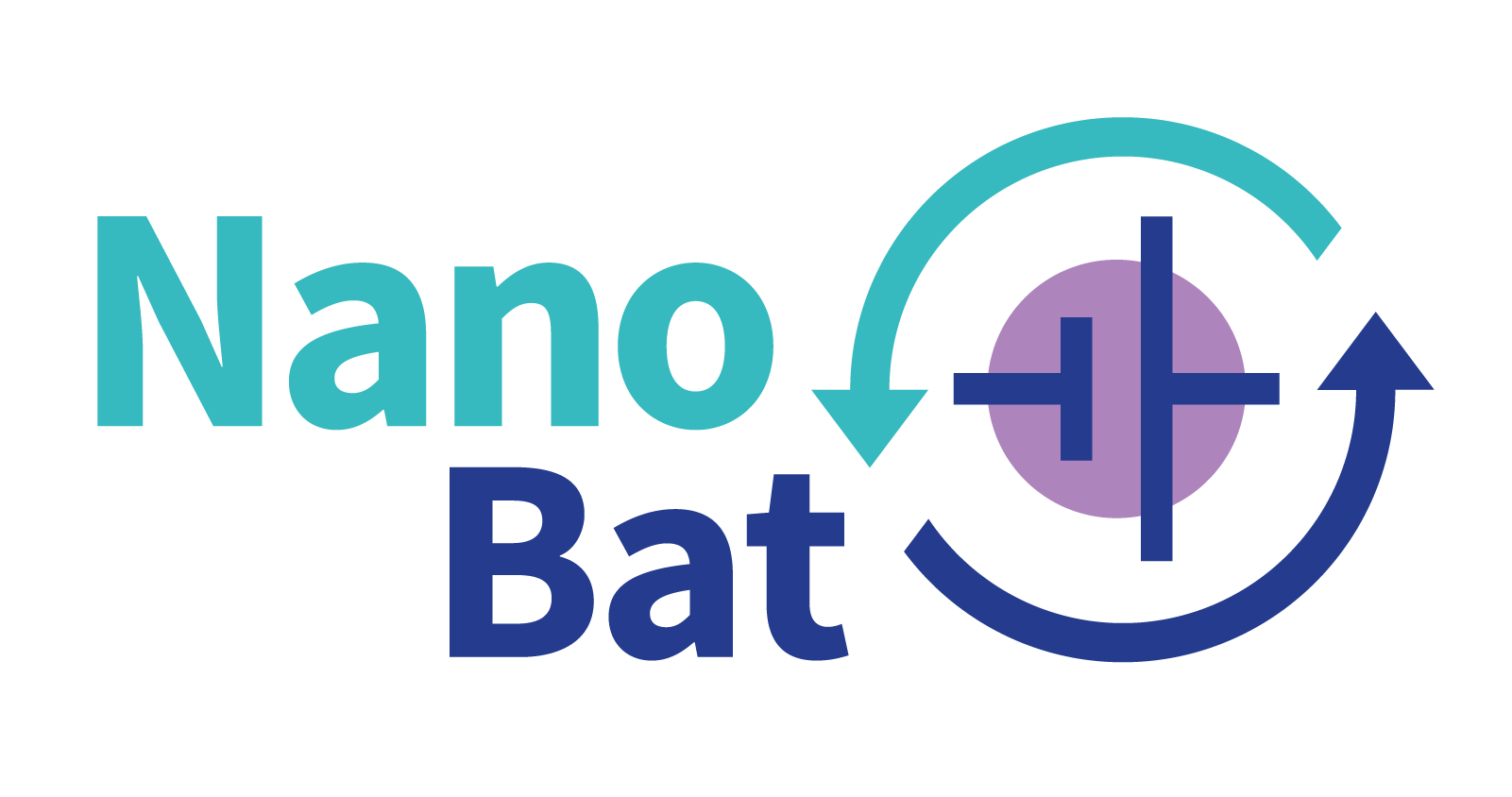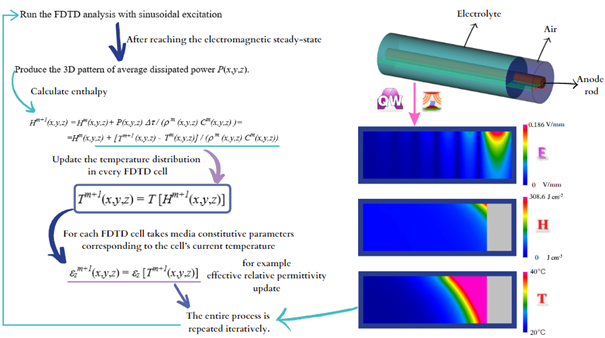
NanoBat
GHz nanoscale electrical and dielectric measurements
of the solid-electrolyte interphase
and applications in the battery manufacturing line
of the solid-electrolyte interphase
and applications in the battery manufacturing line
Coupled GHZ Thermal workflow for a battery model
Download QW-Modeller example (ZIP file).
Note: if the link does not open automatically, press right mouse button, choose “Copy link address” and paste it into a new browser window.
Note: if the link does not open automatically, press right mouse button, choose “Copy link address” and paste it into a new browser window.
Standard electromagnetic simulators assume that a given scenario remains constant throughout the analysis. This assumption is not met when modeling practical microwave processes, since the constitutive parameters of all typical electrolytes change significantly due to heat dissipation, temperature increase and/or phase changes. It may also be beneficial to analyze EM effects coupled to thermodynamic ones. QuickWaveTM software provides a module called Basic Heating Module (see QW-BHM). The battery model is ready to download from the link above. Since its geometry is cylindrical, V2D calculations are used significantly reducing the time of the whole simulation. In the model created in QW-Modeller it is possible to manipulate the parameters of the system. Before starting the calculation procedure, it is worth to define the frequency of the source with which we will interact with the electrolyte, its electromagnetic parameters (including electrical permittivity and conductivity) and the heating settings of the BHM module. After selecting the initial condition, we can start the simulation analysis. First, the FDTD algorithm is run until the steady state is reached and the electromagnetic fields are calculated.
On Figure 1 you can see an example of result; the electric field E. Based on the results, a pattern of averaged dissipated power is created. With this information, each mth cell enthalpy H is updated. It is necessary to know the density of the electrolyte ρ and the specific heat Cm. With the new value of enthalpy is associated with an increase in the temperature T in the cell, hence there is an update of the entire temperature field. As this value increases, the material parameters of the electrolyte change. All cells containing information about them are updated. Thus ends the first heating step for the battery model. With the results achieved, the next step of the heating procedure is started, until the user-defined maximum heating time condition is reached. The model allows calculating the results for different electrolytes depending on its electromagnetic parameters.
On Figure 1 you can see an example of result; the electric field E. Based on the results, a pattern of averaged dissipated power is created. With this information, each mth cell enthalpy H is updated. It is necessary to know the density of the electrolyte ρ and the specific heat Cm. With the new value of enthalpy is associated with an increase in the temperature T in the cell, hence there is an update of the entire temperature field. As this value increases, the material parameters of the electrolyte change. All cells containing information about them are updated. Thus ends the first heating step for the battery model. With the results achieved, the next step of the heating procedure is started, until the user-defined maximum heating time condition is reached. The model allows calculating the results for different electrolytes depending on its electromagnetic parameters.

Figure 1 Workflow of electromagnetic simulation using QW-BHM applied to a battery model.
The model is now ready for simulation with default settings:
•
Source with 1 GHz sinusoidal excitation
•
BHM Mode is turn on with heat flow. Total heating time is equal 1000 seconds
•
The electrolyte labeled in Figure 1 is a lossy medium with a conductivity of 0.01 S/m

The NanoBat project has received funding from the European Union's Horizon 2020 research and innovation programme under grant agreement No 861962.
